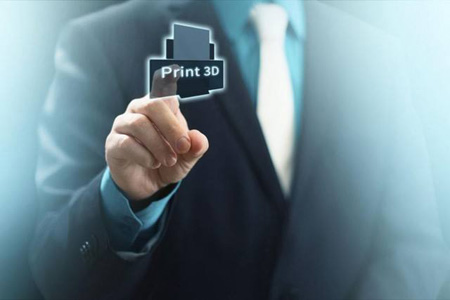3D printing technology is also called additive manufacturing. Using this technology to make metal devices is somewhat the same as our current powder metallurgy process. They are based on metal powders, such as ceramic powder and metal powder. At present, the difficulties of 3D printing technology is to use refractory metals for printing, especially metals with high melting points such as chromium, and thorium, not to mention nano-sized powder particles. For many years, scientists from various countries have devoted themselves to researching new processes that can be cost-effective and achieve the desired performance requirements.

Foreign scientists have developed a new technology that can use 3D printing technology to create complex nanoscale metal structures. This technology can be used in a variety of applications, such as designing 3-D logic circuits on tiny computer chips and manufacturing engineering ultralight aircraft components. This process can create a variety of new types with different characteristics. Nanomaterials. In 3D printing, objects are built layer by layer, allowing the creation of products that do not need to be manufactured by conventional subtractive methods such as etching or milling. California Institute of Technology materials scientist Julia Greer and her team designed an ultra-thin three-dimensional structure in a 3D printer group (additive manufacturing machine). The beam size of this three-dimensional structure is the only nanoscale, which is too small to use the naked eye. See.
The new 3-D group prints structures for a variety of materials, from ceramics to organic compounds. Besides, scientists are working hard to break through 3D printing of refractory metals such as tungsten and titanium, especially when trying to make fine powders smaller than about 50 microns or about half the width of a hair. More detailed description: Scientists glue nickel and organic molecules together to form a liquid that looks like cough syrup. They designed the structure using computer software and then built it by switching liquids with a two-photon laser. Lasers create stronger chemical bonds between organic molecules, hardening them into building blocks of the structure. Since these molecules are also bound to nickel atoms, nickel is incorporated into the fabric. In this way, the teams were able to print a three-dimensional structure that was initially a mixture of metal ions and non-metallic organic molecules.

Then place the structure in an oven and slowly heat it to 1000 degrees Celsius (about 1800 degrees Fahrenheit) in a vacuum chamber. This temperature is well below the melting point of nickel (1455 degrees Celsius or about 2650 degrees Fahrenheit). Still, it is hot enough to vaporize organic materials in the structure, leaving only the metal. A heating process called pyrolysis also fuses metal particles.
Besides, as the process evaporates a large number of structural materials, its size is reduced by 80%, but its shape and proportions are still maintained. The final shrinkage is an essential reason for making the structure so small. In this constructed nanostructure, the diameter of the metal beam of the printed part is about 1/1000 of the size of the tip of a sewing needle. "At the same time, scientists also hope to use this process to print other materials, including ceramics, semiconductors, piezoelectric materials, and other heterogeneous materials.
TRUNNANO (aka. Luoyang Kmpass Nano Technology Co. Ltd.) is a trusted global chemical material supplier & manufacturer with over 12 years’ experience in providing super high quality chemicals and Nano materials. The 3D printing metal powder produced by our company has high purity, fine particle size and impurity content. Lower, please contact us if necessary.



